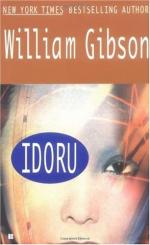|
This section contains 4,148 words (approx. 14 pages at 300 words per page) |

|
SOURCE: Glazer, Miriyam. “‘What is Within Now Seen Without’: Romanticism, Neuromanticism, and the Death of the Imagination in William Gibson's Fictive World.” Journal of Popular Culture 23, no. 3 (winter 1989): 155–64.
In the following essay, Glazer traces recent developments in science fiction and places Gibson within the context of the science fiction genre.
If the chaos of the nineties reflects a radical shift in paradigms of visual literacy, the final shift away from the Lascaux/Gutenberg tradition of a pre-holographic society, what should we expect from this newer technology, with [its] promise of discrete encoding and subsequent reconstruction of the full range of sensory perception?
—William Gibson, “Fragments of a Hologram Rose,” Burning Chrome
Author of the acclaimed, award-winning novel Neuromancer, as well as of Count Zero, Mona Lisa Overdrive and the short stories collected in Burning Chrome, William Gibson has been greeted as a vital new voice on the science...
|
This section contains 4,148 words (approx. 14 pages at 300 words per page) |

|


